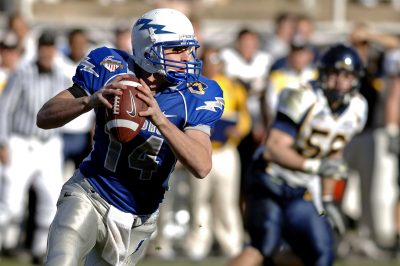Sports Vision & Concussion Baseline Orlando, Clermont, Windermere, Lake Nona, FL

Tweak your game with sports specific vision training
~85% of the information we obtain is Vision based.
Vision is often forgotten and taken for granted in sports. However, vision accounts for ~85% of our perception & learning.
As sports are dynamic and the visual information is constantly changing, merely having 20/20 vision is not enough. By improving Dynamic vision, fast eye movements and peripheral awareness, athletes are given the visual tools to anticipate and process the environment quicker!
Improving and enhancing vision will also help athletes avoid injury, such as blind side screens in basketball, or a linebacker rushing from a previous blind spot! Hand eye reaction time correlates with defensive quickness.
Lastly, establishing baseline vision measures, is crucial for concussion recovery as it allows for a more tailored approach.
Anticipation (Visualization), Peripheral vision and Eye-hand speed are the keys to success!
- Visualizing is a higher brain function
- This allows athletes to see plays unfold before their eyes
- Imagine being able to predict where the Safety (or defense) will be moving before making your move
- Imagine seeing your entire ice skating or floor routine before you perform
- See a tennis rally play out in your head before making that shot decision
- This allows athletes to see plays unfold before their eyes
- Peripheral vision / awareness
- Enhance your vision by strengthening your peripheral vision
- See the D-line or linebacker running in from your blind spot
- Develop & misdirect the defense by seeingsmall cues without looking in that direction
- Play better defense by seeing the weak side screens
- Find the open man easier
- Enhance your vision by strengthening your peripheral vision
- Eye Hand Speed
- Extremely critical from tennis, football, basketball to hockey
- Eye Brain Speed
- Did you know your eyes do not see… your brain does?
- Our brains control how fast we do certain tasks
- Let to train your brain to make decisions and see quicker!
- Did you know your eyes do not see… your brain does?
To be the best, you have to train like the best.
Vision training can help athletes avoid concussions.
Being able to see the entire field of play is an important skill and gives the athlete many advantages including enhanced visualization of how a play will run and avoiding injuries. Having an awareness of all player locations decreases unpredictable situations, such as a Defensive lineman running in from your blindside, running hard into a pick & roll screen.
Peripheral vision training will give you the tools to succeed!
A concussion affects not only balance, but also vision & the brain!
Many of our every day tasks are vision related. Reading emails, social media, school work, watching TV, watching game film. A concussion is a traumatic brain injury that not only affects balance, but also memory, brain processing speeds, speech, light sensitivity, near focusing, convergence, peripheral vision and more.
As our eyes and vision are a large component of post concussion injury, knowing how your eyes function pre-concussion is critical. This way, post concussion vision training has a baseline to compare your results.
We have different tools to assess and train your vision. Through intense vision training you will regain your visual functions much quicker versus passive healing and gain the tools to avoid future injuries!.
